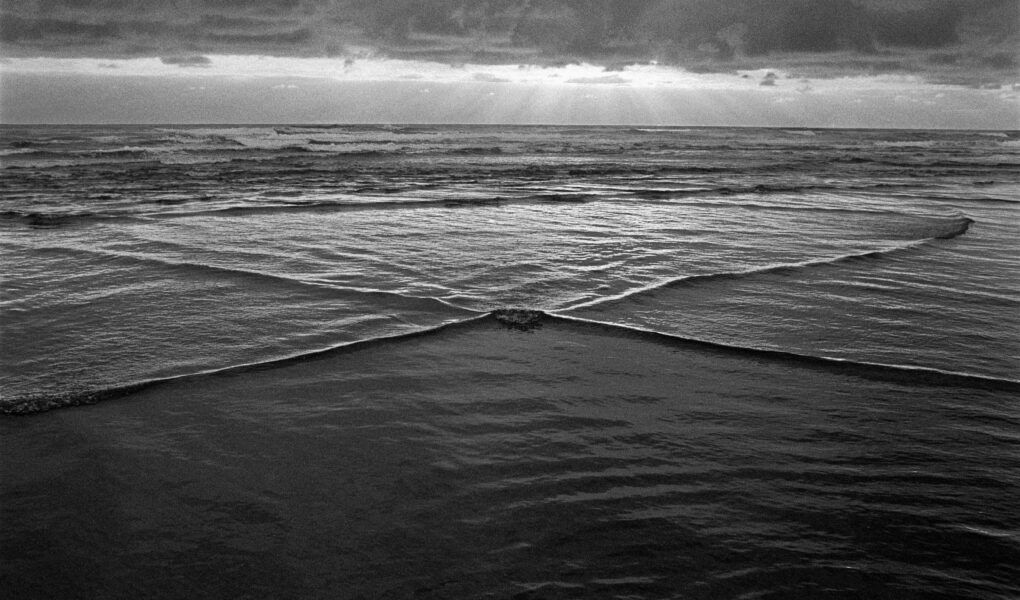by Prudence Roberts
This is the story of one of Terry Toedtemeier’s most distinctive photographs, its place in his career, and how the image made it out into the world.1 The print, and the many books and periodicals in which it has been reproduced, are testament to the way in which so many of Terry’s images can be viewed, with equal appreciation by art audiences and hard-core scientists.
It is also a story of serendipity and coincidence. Terry was no stranger to these. As his wife, I saw many astonishing and wonderful things in my travels with him, including a fully preserved cougar skeleton deep in a lava tube cave; an eagle that rose from the road in front of us with a squirming rattler in its talons; a seemingly bottomless rift in the Idaho Badlands; and an ancient and famed cactus crashing to the ground in front of him in the Huntington Gardens when no one else was around. Throughout such adventures, in his art and in his life, Terry had the good fortune to be guided by both intuition and intellect. From his childhood, exploring the rocks and creeks in his own Portland neighborhood, he knew that the most meaningful forms of beauty and mystery were to be found in the natural world. He majored in geology at Oregon State University, but was never interested in a career in extractive industries. He studied drawing in college, but he had already found photography while still in high school. His cameras, and he had many, were really the expressive tools he needed. He loved both the technical and aesthetic aspects of camera bodies and lenses—the more specialized, the better—and the alchemy of the dark room. I suspect his red-green colorblindness was responsible for his acute perceptions of form, texture, and contrast. In his printing, he favored subtlety and quietude over drama. Similarly, he was not drawn to the grand vista or the expected “best general view.”
This essay was edited by Sue Taylor, Professor Emerita of Art History, Portland State University, and appeared in FIGURING, a publication of The Ford Family Foundation. The annual arts journal (shifting title as it progresses) is part of the program element CRITICAL CONVERSATIONS, led by the University of Oregon with partners Portland State University, The Cooley Gallery, Reed College; and PNCA at Willamette University.
The inaugural publication is dedicated to notions of “figuring,” that is, the processing of a moment to inform a position from which to act, the presentation of a form, or expression of a body. By holding space for both indeterminacy and latent form, Figuring conjures histories and possible futures, lived experiences, and propositions for ways that ethereal matter might exist concretely or be allowed to endure as defined by its own logic.
